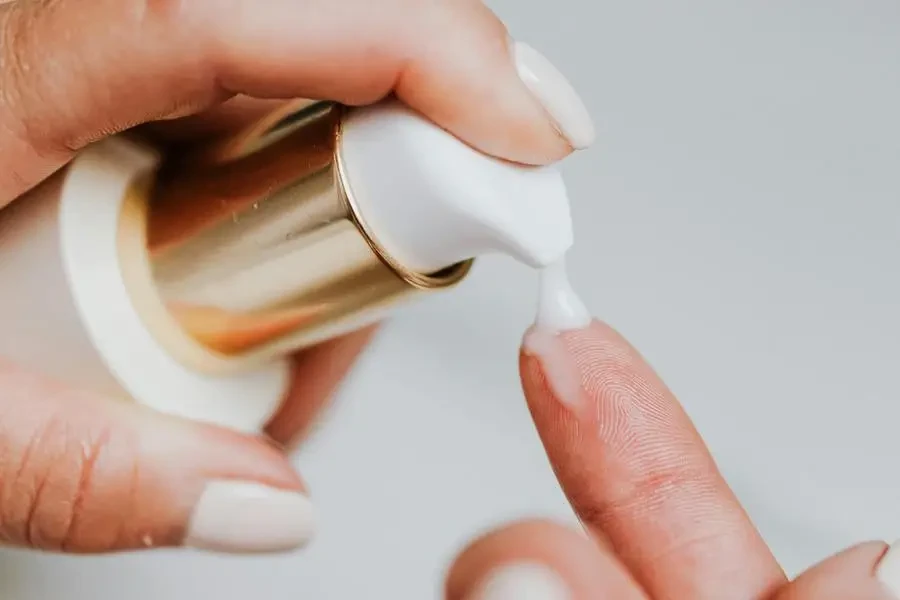Cocoa butter lotion has emerged as a skincare staple in 2025, captivating the beauty industry with its rich, nourishing properties. This article delves into the growing popularity of cocoa butter lotion, exploring its benefits, market potential, and the social media trends propelling its demand.
Table of Contents:
– Exploring the Rising Popularity of Cocoa Butter Lotion
– Diverse Cocoa Butter Lotion Varieties: Pros and Cons
– Addressing Consumer Pain Points with Cocoa Butter Lotion
– Conclusion: Summarizing Key Insights on Cocoa Butter Lotion
Exploring the Rising Popularity of Cocoa Butter Lotion

Defining Cocoa Butter Lotion and Its Benefits
Cocoa butter lotion is a luxurious skincare product derived from the fat of cocoa beans. Renowned for its deep moisturizing capabilities, it is packed with antioxidants and essential fatty acids that help to hydrate and rejuvenate the skin. The lotion is particularly effective in treating dry skin, reducing the appearance of scars and stretch marks, and providing a protective barrier against environmental stressors. Its natural emollient properties make it a favorite among those seeking to maintain smooth, supple skin.
Analyzing Market Potential and Demand Growth
The market for cocoa butter lotion is experiencing significant growth, driven by increasing consumer awareness of skincare benefits and a rising focus on wellness. According to a professional report, the body lotions market, which includes cocoa butter lotion, is projected to grow from $79.44 billion in 2024 to $122.8 billion by 2028, at a compound annual growth rate (CAGR) of 11.5%. This growth is fueled by evolving lifestyles, the expansion of e-commerce, and the growing interest in natural and organic skincare products. The millennial demographic, which is expected to make up nearly 75% of the global workforce by 2025, plays a crucial role in this market expansion due to their preference for high-quality, effective skincare solutions.
Trending Social Media Hashtags and Broader Trend Alignment
Social media has been a powerful catalyst in the rising popularity of cocoa butter lotion. Trending hashtags such as #CocoaButterLove, #NaturalSkincare, and #GlowWithCocoa have garnered millions of posts, highlighting the product’s benefits and user experiences. These hashtags align with broader trends in the beauty industry, including the clean beauty movement, which emphasizes the use of natural and non-toxic ingredients, and the growing demand for sustainable and ethically sourced products. The alignment with these trends not only boosts the visibility of cocoa butter lotion but also reinforces its appeal to a conscientious consumer base.
In conclusion, cocoa butter lotion is set to dominate the skincare market in 2025, driven by its numerous benefits, robust market potential, and strong presence on social media. As consumers continue to prioritize natural and effective skincare solutions, the demand for cocoa butter lotion is expected to soar, making it a key player in the beauty industry’s future.
Diverse Cocoa Butter Lotion Varieties: Pros and Cons

In-Depth Analysis of Ingredients and Effectiveness
Cocoa butter lotions are renowned for their rich, moisturizing properties, making them a staple in the beauty and personal care industry. The primary ingredient, cocoa butter, is a natural fat extracted from cocoa beans, known for its high concentration of fatty acids. These fatty acids help to deeply hydrate and nourish the skin, making cocoa butter lotions particularly effective for dry and rough skin types. Additionally, cocoa butter contains antioxidants such as vitamin E, which help to protect the skin from environmental stressors and free radicals.
However, not all cocoa butter lotions are created equal. The effectiveness of these lotions can vary significantly based on the formulation and the presence of additional ingredients. For instance, some formulations include added emollients like glycerin and squalane, which enhance the lotion’s moisturizing capabilities. According to a report by Research and Markets, products infused with skin-softening squalane and Amazon-sourced miracle oils have shown to provide superior hydration and skin benefits. On the other hand, lotions with synthetic fragrances and preservatives may cause irritation for sensitive skin types, highlighting the importance of ingredient transparency and quality.
Consumer Feedback and Popular Preferences
Consumer feedback plays a crucial role in determining the popularity and effectiveness of cocoa butter lotions. Many users appreciate the rich, creamy texture and the long-lasting hydration that cocoa butter provides. Popular brands like Palmer’s and Vaseline have garnered positive reviews for their cocoa butter lotions, often praised for their ability to improve skin texture and reduce the appearance of scars and stretch marks.
However, some consumers have reported that certain cocoa butter lotions can feel greasy or take longer to absorb into the skin. This feedback underscores the importance of formulation in meeting consumer expectations. For instance, lotions that balance cocoa butter with lighter oils or fast-absorbing ingredients tend to receive higher satisfaction ratings. Additionally, the scent of cocoa butter lotions is a significant factor for many consumers, with natural, subtle fragrances being preferred over strong, artificial scents.
Comparing Different Product Types
Cocoa butter lotions come in various forms, each catering to different skin needs and preferences. Traditional lotions are the most common, offering a balanced consistency that is suitable for daily use on normal to dry skin. These lotions often include additional hydrating ingredients like aloe vera and shea butter to enhance their moisturizing properties.
For those with extremely dry or damaged skin, body butters and creams provide a more intensive treatment. These products have a thicker consistency and higher concentration of cocoa butter, making them ideal for targeting specific areas like elbows, knees, and heels. On the other hand, lightweight cocoa butter gels and serums are designed for quick absorption and are suitable for oily or combination skin types. These products often incorporate humectants like hyaluronic acid to attract moisture without leaving a heavy residue.
Addressing Consumer Pain Points with Cocoa Butter Lotion

Common Skin Issues and Cocoa Butter Solutions
Cocoa butter lotions are particularly effective in addressing common skin issues such as dryness, rough texture, and stretch marks. The high fatty acid content in cocoa butter helps to create a protective barrier on the skin, locking in moisture and preventing further dehydration. This makes cocoa butter lotions an excellent solution for individuals with chronic dry skin or conditions like eczema.
Moreover, the antioxidant properties of cocoa butter can help to improve skin elasticity and reduce the appearance of scars and stretch marks. According to a professional report, the inclusion of ingredients like vitamin E and peptides in cocoa butter formulations can enhance these benefits, promoting skin regeneration and healing. For instance, Palmer’s Cocoa Butter Formula is widely recognized for its effectiveness in improving skin tone and texture, particularly for pregnant women looking to prevent stretch marks.
Innovations in Cocoa Butter Lotion Formulations
The beauty and personal care industry is continuously evolving, with new innovations in cocoa butter lotion formulations emerging to meet consumer demands. One notable trend is the incorporation of natural and organic ingredients, which cater to the growing preference for clean beauty products. Brands like SheaMoisture and Nubian Heritage have introduced cocoa butter lotions that are free from parabens, sulfates, and synthetic fragrances, appealing to health-conscious consumers.
Another innovation is the development of multifunctional cocoa butter lotions that offer additional benefits beyond hydration. For example, some formulations now include SPF protection, anti-aging ingredients like retinol, and even CBD oil for its anti-inflammatory properties. These multifunctional products provide a convenient solution for consumers looking to streamline their skincare routine without compromising on efficacy.
Key Factors to Consider When Sourcing Cocoa Butter Lotion
When sourcing cocoa butter lotions for retail or wholesale, several key factors should be considered to ensure product quality and consumer satisfaction. Ingredient safety is paramount, with a preference for formulations that use high-quality, natural ingredients and avoid harmful additives. Packaging stability is also crucial, as cocoa butter lotions can be sensitive to temperature changes and light exposure, which can affect their consistency and efficacy.
Adherence to local regulatory standards is another critical consideration. Different regions have varying regulations regarding cosmetic ingredients and labeling, so it is essential to ensure that the products meet all legal requirements. Additionally, sourcing from reputable manufacturers with a track record of quality and reliability can help to mitigate risks and ensure a consistent supply of high-quality cocoa butter lotions.
Conclusion: Summarizing Key Insights on Cocoa Butter Lotion

In conclusion, cocoa butter lotions offer a range of benefits, from deep hydration to improved skin elasticity and reduced appearance of scars. The effectiveness of these lotions depends on the formulation and the quality of ingredients used. Consumer feedback highlights the importance of non-greasy, fast-absorbing formulations with natural fragrances. Innovations in the industry continue to enhance the functionality of cocoa butter lotions, incorporating additional benefits like SPF protection and anti-aging properties. For business buyers, sourcing high-quality cocoa butter lotions involves careful consideration of ingredient safety, packaging stability, and regulatory compliance to meet consumer expectations and ensure product success.




